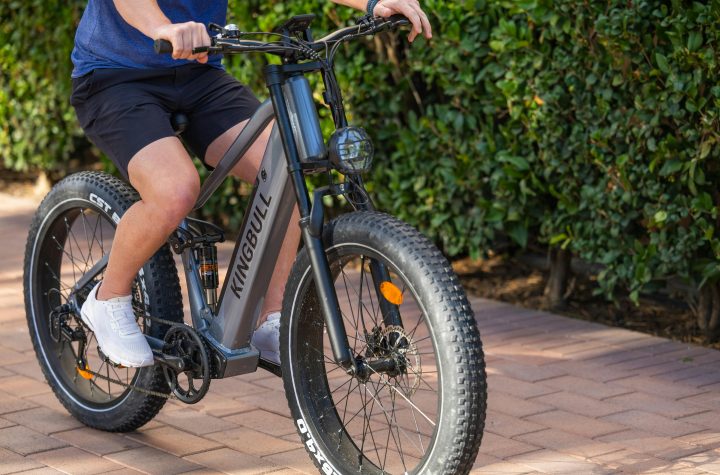

Building a Home Gym: 10 Considerations
Creating a home gym offers fitness enthusiasts a convenient and personalized space to pursue their fitness goals. With the increasing popularity of home workouts, having a dedicated gym space has become essential for many individuals seeking to maintain an active lifestyle. Whether you’re a seasoned athlete or someone looking to incorporate more physical activity into your daily routine, building a home gym provides the flexibility and accessibility needed to stay committed to your fitness journey. In this guide, we’ll explore ten key considerations to keep in mind when designing and setting up your home gym to ensure it meets your needs and supports your fitness goals effectively.
Budget

When planning your home gym, establishing a budget is essential to ensure that you’re making financially sound decisions. Here’s what to consider:
Initial Costs
The initial costs of setting up a home gym can vary widely depending on your preferences and requirements. Consider expenses such as purchasing exercise equipment, flooring materials, and any necessary accessories. Hiring a custom home remodeler to optimize the space for your gym may also be part of your initial investment.
Maintenance Costs
In addition to the upfront expenses, it’s crucial to budget for ongoing maintenance costs. This includes regular cleaning and upkeep of equipment, as well as potential repairs or replacements over time. Factoring in these expenses from the beginning can help you avoid unexpected financial burdens down the road.
Long-term Investment
Building a home gym is not just a short-term expense; it’s a long-term investment in your health and well-being. While the initial costs may seem significant, consider the savings you’ll enjoy over time compared to a gym membership. By investing in your own gym equipment and space, you’ll have the freedom to work out on your schedule without recurring membership fees.
By carefully budgeting for initial costs, maintenance expenses, and viewing your home gym as a long-term investment, you can create a fitness space that aligns with your financial goals and supports your commitment to a healthy lifestyle.
Space

When designing your home gym, evaluating the available space is crucial to optimize functionality and ensure a comfortable workout environment. Here’s what to consider:
Available Space
Assess the dimensions and layout of the area designated for your home gym. Consider factors such as ceiling height, floor space, and any architectural features that may impact the layout. Consulting with a concrete contractor can help you determine if any structural modifications are needed, such as installing floor coatings to enhance durability and aesthetics.
Storage Solutions
Efficient storage solutions are essential for keeping your home gym organized and clutter-free. Invest in storage racks, shelves, and cabinets to store equipment, accessories, and workout gear. Utilizing vertical space can maximize storage capacity without sacrificing floor space, ensuring easy access to equipment while maintaining a tidy environment.
Room for Expansion
While planning your home gym layout, leave room for future expansion and flexibility. Consider how your fitness needs may evolve over time and allocate space for additional equipment or workout zones. This foresight allows you to adapt your home gym to accommodate new fitness goals or incorporate new exercise modalities without major renovations.
By carefully assessing available space, implementing effective storage solutions, and planning for future expansion, you can create a home gym that maximizes functionality and supports your fitness journey effectively. Consulting with professionals such as concrete contractors can provide valuable insights and recommendations for optimizing your gym space.
Equipment
Selecting the right equipment is crucial for creating an effective and enjoyable home gym experience. Here’s what to consider:
Essential Equipment
Start by identifying the essential equipment needed to achieve your fitness goals. This may include cardio machines like treadmills or stationary bikes, strength training equipment such as dumbbells or resistance bands, and functional training tools like stability balls or yoga mats. Prioritize equipment that aligns with your workout preferences and target muscle groups.
Quality vs Quantity
When it comes to equipment, quality should take precedence over quantity. Invest in high-quality pieces that are durable, safe, and built to last. While it may be tempting to purchase numerous pieces of equipment, focus on acquiring fewer items of superior quality. This approach ensures that your home gym is equipped with reliable and effective tools that withstand regular use over time.
Multi-functional Pieces
Opt for multi-functional pieces of equipment that offer versatility and space-saving benefits. Look for items that can accommodate a variety of exercises and workout routines, allowing you to maximize your workout options without overcrowding your gym space. Multi-functional equipment, such as adjustable benches or cable machines, provide diverse training opportunities and help optimize your workout efficiency.
By prioritizing essential equipment, prioritizing quality over quantity, and selecting multi-functional pieces, you can create a well-rounded home gym that meets your fitness needs and preferences. Consult with professionals such as AC services to ensure proper ventilation and climate control in your gym space, enhancing comfort and performance during workouts.
Safety

Ensuring a safe workout environment is paramount in any home gym setup. Here’s how to prioritize safety:
Flooring Options
Selecting the right flooring is essential to prevent injuries and protect your equipment. Choose flooring materials that provide adequate cushioning and shock absorption to minimize the risk of impact-related injuries. Options such as rubber tiles or interlocking foam mats offer excellent durability and traction, reducing the likelihood of slips or falls during workouts. Consult with experts in expert personal training services to recommend flooring options that promote stability and support proper biomechanics during exercise.
Proper Ventilation
Proper ventilation is crucial for maintaining air quality and comfort in your home gym. Poor ventilation can lead to stuffiness, moisture buildup, and unpleasant odors, creating an uncomfortable and potentially hazardous environment. Ensure adequate airflow by installing fans or vents to facilitate air circulation and regulate temperature. This not only enhances comfort during workouts but also helps prevent heat-related issues and respiratory problems. Seek guidance from professionals such as AC services to optimize ventilation and create a breathable atmosphere conducive to safe and effective workouts.
Emergency Preparedness
Prepare for unexpected emergencies by implementing safety measures and having emergency protocols in place. Keep a first aid kit readily accessible and ensure that it is stocked with essential supplies for treating minor injuries. Familiarize yourself with CPR and basic first aid procedures, and consider installing emergency communication devices or alarms for added peace of mind. Additionally, maintain clear pathways and emergency exits to facilitate quick evacuation in the event of an emergency. Prioritize safety at all times to create a secure and risk-free environment for your home workouts.
Personalization
Tailoring your home gym to your individual needs and preferences is key to creating a space that motivates and inspires you. Here’s how to personalize your home gym:
Fitness Goals
Identify your specific fitness goals and objectives to guide the design and setup of your home gym. Whether you’re aiming to build strength, improve cardiovascular health, or enhance flexibility, aligning your equipment and training programs with your goals is essential for success. Consult with expert personal training professionals to develop customized workout plans tailored to your objectives and fitness level.
Personal Preferences
Consider your personal preferences when selecting equipment, decor, and layout for your home gym. Choose equipment that you enjoy using and activities that you find stimulating and enjoyable. Incorporate elements such as favorite colors, motivational quotes, or inspiring artwork to personalize the space and create a positive atmosphere. By infusing your personality into your home gym, you’ll feel more motivated and enthusiastic about your workouts.
Motivation Factors
Identify factors that motivate and inspire you to stay consistent with your fitness routine. Whether it’s tracking progress, setting rewards for reaching milestones, or surrounding yourself with supportive reminders, find strategies that keep you motivated and focused on your goals. Consider installing an overhead door with windows to allow natural light to flood the space, creating an inviting and energizing environment for your workouts.
By personalizing your home gym to align with your fitness goals, preferences, and motivation factors, you’ll create a space that enhances your enjoyment and commitment to exercise. Consult with professionals such as overhead door specialists to customize your gym environment and ensure it meets your unique needs and aspirations.
Convenience
Creating a convenient home gym setup is essential for maintaining consistency and adherence to your fitness routine. Here’s how to prioritize convenience:
Location of Gym
Choose a location for your home gym that is easily accessible and conducive to workouts. Consider factors such as proximity to other living spaces, privacy, and noise levels. Opt for a dedicated room or area that offers sufficient space and privacy for exercising without distractions. Consult with professionals such as local plumbers to ensure that the location is suitable for installing essential amenities such as a water heater, ensuring comfort and convenience during workouts.
Accessibility of Equipment
Arrange your gym equipment in a way that maximizes accessibility and usability. Organize equipment based on frequency of use and workout flow, ensuring that essential items are readily available and easily accessible. Consider incorporating storage solutions such as racks or shelves to keep equipment organized and within reach. This streamlines your workout routine and minimizes time spent searching for or setting up equipment.
Time Management
Efficient time management is crucial for making the most of your home gym workouts. Establish a consistent workout schedule that fits seamlessly into your daily routine, taking into account factors such as work commitments, family obligations, and personal preferences. Set aside dedicated time slots for exercise and prioritize consistency to maintain momentum and progress towards your fitness goals. By effectively managing your time, you’ll maximize the convenience and effectiveness of your home gym experience.
By prioritizing convenience in the location, accessibility of equipment, and time management of your home gym setup, you’ll create a space that facilitates regular workouts and supports your fitness journey effectively. Consulting with professionals such as local plumbers ensures that your gym location is equipped with essential amenities for comfort and convenience during workouts.
Maintenance
Regular maintenance is essential for keeping your home gym in optimal condition and ensuring a safe and enjoyable workout environment. Here’s how to maintain your home gym effectively:
Cleaning Routine
Establish a regular cleaning routine to keep your home gym clean and hygienic. Wipe down equipment surfaces, floors, and other gym accessories after each use to remove sweat, dirt, and bacteria. Use appropriate cleaning products and disinfectants to sanitize equipment and prevent the spread of germs. Regular cleaning not only maintains the appearance of your gym but also prolongs the lifespan of equipment and promotes a healthy workout environment. Consider consulting with professionals such as mold removal specialists to address any mold or mildew issues that may arise in humid environments, ensuring a clean and safe workout space.
Equipment Upkeep
Perform routine maintenance checks on your gym equipment to ensure proper functioning and safety. Inspect equipment for signs of wear and tear, loose parts, or malfunctioning components, and address any issues promptly. Lubricate moving parts, tighten bolts and screws, and replace worn-out or damaged parts as needed. Following manufacturer guidelines for maintenance and servicing helps extend the lifespan of your equipment and reduces the risk of accidents or injuries during workouts.
Repairs and Replacements
Address repairs and replacements promptly to prevent minor issues from escalating into major problems. Keep spare parts on hand for quick fixes, and contact professional repair services or technicians for more complex issues. Whether it’s repairing a malfunctioning treadmill or replacing a damaged exercise mat, prioritize timely maintenance to minimize downtime and keep your home gym operating smoothly. Additionally, schedule periodic inspections of essential systems such as septic tanks and plumbing to detect and address potential issues before they escalate. Consulting with professionals such as septic tank experts and mold removal specialists ensures that your home gym remains safe, functional, and free from maintenance-related issues.
Design Aesthetics
Creating a visually appealing and inspiring environment is essential for maximizing motivation and enjoyment in your home gym. Here’s how to enhance the aesthetics of your gym:
Color Scheme
Choose a color scheme that energizes and motivates you during workouts. Opt for vibrant and invigorating colors like red or orange to boost energy levels, or calming hues like blue or green for a more relaxed atmosphere. Consider painting accent walls or incorporating colorful equipment to add personality and vibrancy to your gym space.
Lighting Options
Lighting plays a crucial role in setting the mood and ambiance of your home gym. Aim for a combination of natural and artificial lighting to create a well-lit and inviting environment. Install ample windows or skylights to maximize natural light, and supplement with overhead fixtures or task lighting for adequate illumination during early morning or evening workouts. Adjustable lighting options allow you to customize brightness levels based on your preferences and workout intensity.
Inspirational Decor
Incorporate inspirational decor elements to motivate and uplift you during workouts. Display motivational quotes, posters, or artwork that resonate with your fitness goals and aspirations. Personalize your gym space with memorabilia, achievements, or photos that evoke positive emotions and inspire you to push your limits. Surrounding yourself with uplifting decor creates a supportive and motivating atmosphere that enhances your workout experience.
Community Support
Building a supportive community around your fitness journey can significantly impact your success and enjoyment in your home gym. Here’s how to cultivate community support:
Supportive Network
Connect with like-minded individuals who share your fitness interests and goals. Join online forums, social media groups, or local fitness communities to engage with fellow enthusiasts, exchange tips and advice, and find motivation and encouragement. Building a supportive network of friends and peers creates a sense of camaraderie and accountability that fuels your commitment to fitness.
Virtual Classes/Training
Take advantage of virtual classes and training programs to expand your fitness horizons and access expert guidance and instruction. Participate in live or pre-recorded workouts led by qualified instructors or trainers, covering a variety of exercise modalities and fitness levels. Virtual classes offer flexibility and convenience, allowing you to tailor your workouts to your schedule and preferences while benefiting from professional guidance and motivation.
Accountability Partners
Find an accountability partner or workout buddy to help you stay accountable and motivated in your fitness journey. Choose someone who shares similar goals and commitment levels, and establish regular check-ins or workout sessions together. Being accountable to a partner fosters accountability, mutual support, and friendly competition, boosting your motivation and adherence to your fitness regimen.
Future Considerations
Anticipating future needs and opportunities is essential for creating a home gym that evolves with your fitness journey. Here’s how to plan for future considerations:
Growth Opportunities
Plan for growth and expansion by leaving room for additional equipment or workout zones in your gym space. Consider your long-term fitness goals and potential areas for growth, such as incorporating new exercise modalities or accommodating family members’ fitness needs. Designing your gym with growth opportunities in mind ensures that it remains relevant and adaptable to your evolving needs over time.
Conclusion
In conclusion, building a home gym is a rewarding endeavor that requires careful consideration of various factors to create a space that supports your fitness goals and lifestyle. By prioritizing aspects such as design aesthetics, community support, and future considerations, you can create a home gym that inspires and empowers you to achieve your fitness aspirations. Remember to personalize your gym space, cultivate a supportive community, and plan for future growth to ensure that your home gym remains a valuable asset in your fitness journey. Embrace the opportunity to create a space that motivates and energizes you to pursue your fitness goals with passion and determination.




More Stories
How Cycling Helps With Weight Loss
Your Basic Guide to Buying From a New Boat Sales Service
Where to Get Ski and Snowboard Rentals